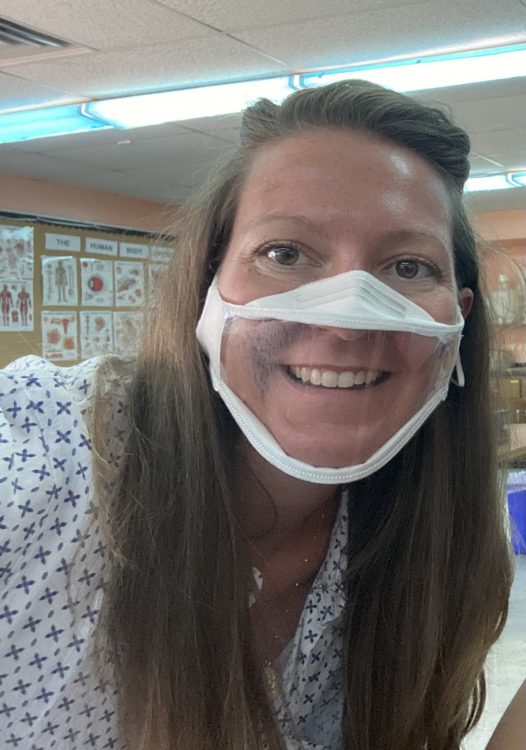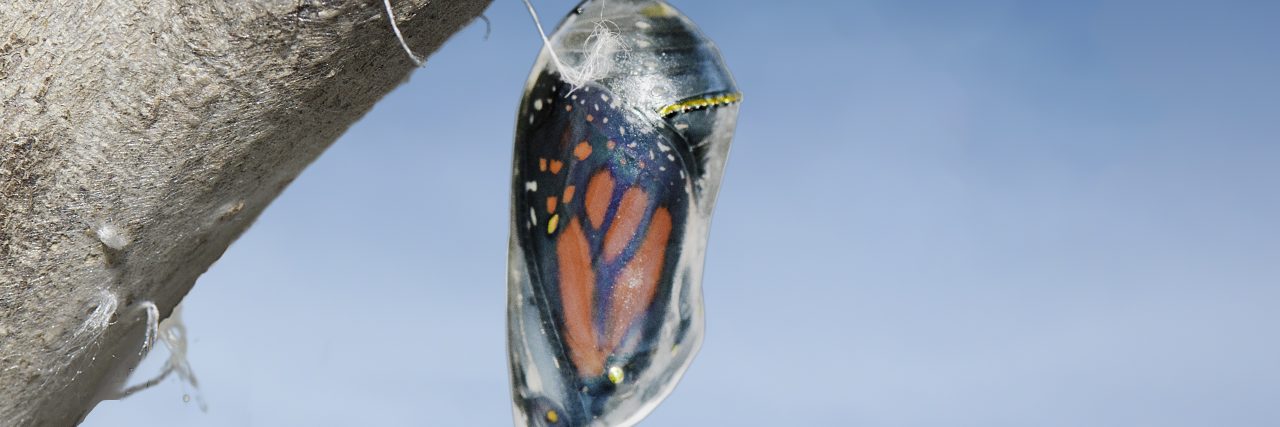How Taking Medical Leave From My Job Because of Chronic Illness Is Like Living in a Chrysalis
While in a chrysalis, a caterpillar undergoes a magnificent physical metamorphosis. Many of us can conceptualize and recognize a caterpillar and a butterfly, but the physical and chemical changes that occur while the caterpillar is in this suspended, stationary state are far less glamorous and identifiable. The tissues of the caterpillar are dissolved, digested, metabolized, absorbed, and rearranged into the new form of a butterfly. You cannot rush this process or force an early emergence, for if you do, the organism will not be able to survive. The work continues once the metamorphosis is complete and the butterfly emerges; the butterfly has to pump fluid through its body to inflate its wings before taking flight. I welcome you inside my dark, chaotic chrysalis. I do not know what I will look like or feel like or where I will be able to go once I emerge, but I know I’m living in a time of transformation.
I began having classic migraine headaches when I was 16, and they became atypical, chronic, and uncontrolled sometime in my 20s when I was eagerly building my career and exploring my life as an independent woman. Now in my late 30s, happily married and a seasoned educator, I’ve experienced the worst of my health despite understanding my specific diagnoses better, having curated the best support in medical teams and relationships, and accessing a wide variety of resources. Everything up to this point has prepared me for this time, but the experience I’m living is still undeniably difficult.
In addition to migraines, I also experience unilateral neurosensory hearing loss because of enlarged vestibular aqueduct syndrome. Perhaps due to an anatomical anomaly in my skull at birth or numerous sports-related head injuries, the presentation of this unique hearing loss took three years to diagnose and was largely invisible to people in my life for nearly a decade — until wearing masks during COVID-19 blocked my essential coping strategy: speech reading.
Without wide acceptance of clear masks, working in a science classroom of over 24 high school students became my kryptonite. Fluorescent lights, the sound of the air filter, the clank and clatter of the old radiator, the background noise of enthusiastic learners or people in the hall, the crackling overhead announcements that sound like the teacher from the Peanuts cartoon, and the unexpected lockdown drills became a barrage of daily migraine triggers. By 10:00 a.m., I used up nearly all my energy reserves — which colleagues and students would say is normally bountiful. Students shared that my passion for my subject is what makes me a great teacher, but my supervisor noticed that I had been a “shell of myself” during the first few months of school.

That’s the difficulty with invisible diseases — from the outside, I look “fine.” As a high functioning migraineur, people-pleaser, and woman in Western society, I was having difficulty admitting I was as far from “fine” as I’ve ever felt. On the inside, I was questioning how long I could physically, mentally, emotionally, and spiritually survive. I wondered what the cost of working in this environment was on my body, and after a lab accident that caused second-degree burns on my dominant hand, I realized pushing through teaching was no longer safe for me.
Anyone who has gone through the Americans With Disabilities Act (ADA) or Family and Medical Leave Act (FMLA) process may share the same vulnerability, humility, and frustration that I experienced. I am a confident, articulate, and educated woman, and advocacy has never been a challenge for me. Still, I found that daily calls with health insurance about coverage for treatment for my ear, scheduling appointments in a medical system that is totally strapped for time and specialists, and communicating with employers about my situation was absolutely humbling. I had three different doctors sign my FMLA forms indicating “incapacity due to treatment” from January through the end of the school year. The first was a neurologist, the second was an ear, nose, and throat doctor, and the third was my primary care physician. They shared a similar response, but each had a different perspective on my comorbidities and treatment plans. These ranged from learning to walk in the rain and not get wet (in reference to living with chronic disease) to a surgery requiring a craniotomy.
After missing half of a school year and having numerous medical visits, images, scans, and prescriptions, I have no clear answers. I don’t know how to tell my confused students about my decision, but I hope in time, they will learn the power of self-care through my example. My husband has worked hard to be both the buoy and the anchor when I feel untethered and lost in the seas of medical advice, and family and friends may feel helpless sharing in my pain and feeling unsure of how best to support me. I am in the midst of this dark chrysalis, knowing that how I entered and how I exit this transformation will be drastically different. I seem physically and metaphorically stationary, and yet, below the layers, there is movement, development, growth, and healing. I can no longer identify as a caterpillar, but I am not yet a butterfly.
My story is less about invisible disability, hearing loss, advocacy, migraine, and perseverance through pain and more about the potential for health conditions to be a catalyst for change. In the isolation of the chrysalis of your medical journey, there is an opportunity to believe and trust that this process is an opportunity to transform into something different and more beautiful and gain the ability to move in your world in new, more powerful ways. I believe I will emerge with wings and learn how to use them to fly to places that were unreachable before this medical leave.
This story is dedicated to my migraine mentor, Kathleen White, another fierce woman living with an invisible disease.
Getty image by barbaraaaa.

